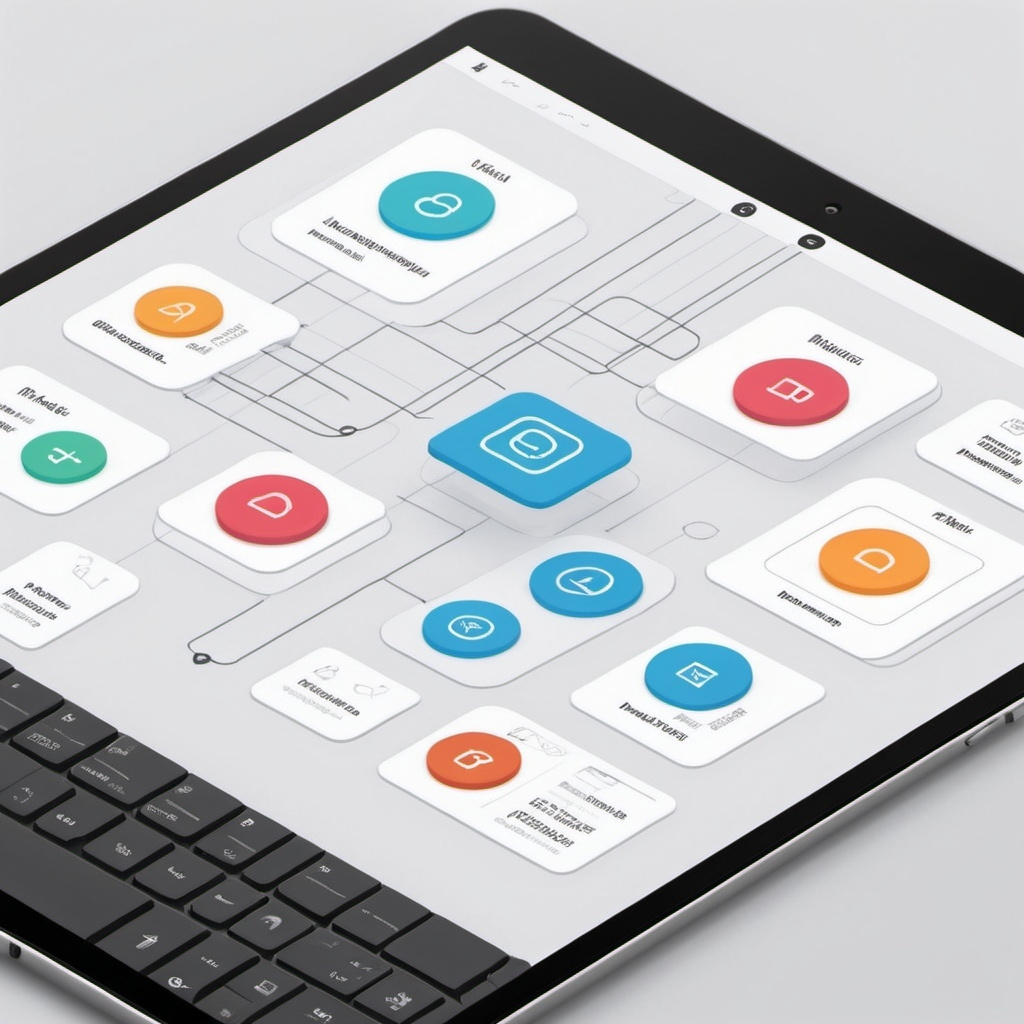User Interface (UI) design is a critical component of our digital world, seamlessly integrating into our daily lives through various devices and platforms. From smartphones to websites, UI design plays a pivotal role in shaping our interactions with technology. A well-crafted UI often goes unnoticed, quietly enhancing our user experience, while a poorly designed one can lead to frustration and dissatisfaction.
The field of UI design is constantly evolving, offering numerous job opportunities across diverse industries. As businesses recognize the importance of creating pleasant and effortless online interactions, the demand for skilled UI professionals continues to grow. This article delves into the essential aspects of UI design, exploring its principles and significance in today’s digital landscape.
Defining User Interface Design
User Interface design encompasses the creation of all interactive elements a user encounters when engaging with a product or service. In the realm of computers and software, UI design extends beyond just buttons and menus. It includes a thoughtful selection of fonts, colors, and other graphic design elements that contribute to the overall user experience.
UI designers must consider accessibility for users with diverse abilities, ensuring that interfaces are inclusive and adaptable. The goal is to create intuitive, enjoyable interfaces that simplify complex technologies and content, making them accessible to a wide range of users. Examples of successful UI design can be seen in platforms like SquareSpace, which allows non-coders to create beautiful websites, or Duolingo, which facilitates quick language learning for non-native speakers.
Key Principles of Effective UI Design
Several fundamental principles guide the creation of successful user interfaces:
- Functionality Over Aesthetics: While visual appeal is important, the primary focus should always be on usability. The interface should enhance, not hinder, the user’s ability to accomplish tasks.
- User Autonomy: Interfaces should allow users to navigate content at their own pace, respecting the concept of “cognitive load” – the amount of information a human brain can process at once.
- Interaction Design (IxD): This involves presenting information efficiently and concisely, often through segmentation and progressive disclosure, to help users achieve their goals without overwhelming them.
- Consistency and Accessibility: Employing familiar UI patterns can improve user engagement and ease of use while ensuring accessibility for users with different abilities.
Common UI Patterns and Their Importance
UI patterns are recurring design solutions that address common user interface problems. These patterns have evolved over time and become familiar to users, enhancing the overall user experience. Some examples include:
- Color-coded action buttons (e.g., brighter “submit” buttons)
- Progress indicators for multi-step processes
- Simplified online forms requiring minimal information
While these patterns are useful, designers must strike a balance between utilizing familiar elements and creating unique, brand-specific interfaces. Tools like Fluid UI assist designers in developing prototypes that incorporate both standard patterns and custom elements, facilitating easy sharing and collaboration with clients.
Essential Tools for UI Design
UI designers have access to a wide array of software tools to bring their ideas to life. Some popular options include:
- Adobe XD
- Figma
- Axure
- Sketch
- Maze
- Framer
- Marvel
These tools enable designers to create wireframes, prototypes, and fully-fledged designs, streamlining the UI design process and facilitating collaboration with team members and clients.
Career Opportunities in UI Design
The field of UI design offers exciting career prospects for individuals with a blend of creative and technical skills. As our digital interactions continue to increase, the demand for UI designers is projected to grow by 12% annually over the next decade, according to LightcastTM Analyst 2021 data.
UI design careers attract professionals from diverse backgrounds, including journalism, art, computer science, and statistics. The most common role in this field is that of a UI designer, responsible for crafting the look and feel of user interfaces, ensuring they are both accessible and aesthetically pleasing.
UI designers often work in collaboration with product managers and other team members to develop cohesive brand styles and optimize user experiences. Their role extends beyond mere visual design, encompassing process mapping and translating brand identities into intuitive interfaces.
Embracing the Future of UI Design
As our world becomes increasingly screen-centric, the importance of innovative and engaging UI design continues to grow. The field needs fresh perspectives and creative minds to meet the evolving demands of the consumer market. For those with a passion for blending creativity with technology, UI design offers a rewarding career path with ample opportunities for growth and innovation.
Whether you’re considering a career transition or looking to enhance your existing skills, the world of UI design presents an exciting frontier. By understanding the fundamentals, principles, and tools of UI design, you can position yourself at the forefront of this dynamic and essential field.

Explore TechTalent: Elevate Your Tech Career
Ready to take your interactive walkthrough skills to the next level?
TechTalent offers opportunities to certify your skills, connect with global tech professionals, and explore interactive design and development.
Join today and be part of shaping the future of interactive walkthroughs!
